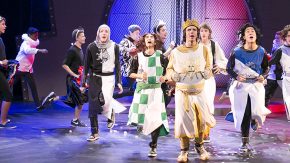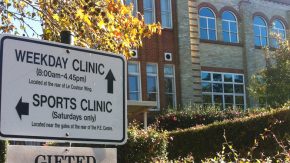Newingtonian, Hugh Howes falls in Mesopotamia
It is tempting to think of the period between the evacuation from Gallipoli in December 1915 and the horrors of Fromelles and Pozieres in July 1916 as a welcome quiet time for Australians in the First World War. The story of Hugh Howes reminds us of the continuing toll as the war ground on in other ‘foreign fields’.
Hugh Gilbert Howes went to school at Newington for only a short time, from May to Christmas 1913. In that time, he played Rugby in the 2nd XV and was described in The Newingtonian as ‘a general favourite’. He had served in the Senior Cadets at the Cleveland Street Superior School and had come to Newington with the intention of entering the Duntroon Military College, but was unsuccessful in the entrance examination. He worked as a salesman before enlisting on 17 August 1914. He had been promoted to Sergeant by the time he embarked for Egypt with the rest of the 3rd Battalion, in which many other Newingtonians were serving.
In Egypt Hugh qualified for a commission and a week before the Gallipoli landings, transferred to the Indian Army Reserve of Officers. He was attached to the 2nd Rajputs as a Second Lieutenant and served on the Suez Canal defences till the end of 1915. Early in 1916 the battalion was transferred to Mesopotamia (modern Iraq) and, on 8 March, took part in an attack on Turkish positions as part of an attempt to reach Anglo-Indian forces besieged at Kut-Al-Amara on the Tigris River. When he was last seen, Hugh was leading his men under murderous fire but was still ‘laughing and cheering’ as reported by his commander, Captain Noyes. He was one of 4000 Anglo-Indian casualties in the attack which, for all their sacrifice, failed in its objective.
Hugh’s loss was keenly felt. ‘I cannot tell you how valuable an officer he was to me’, Noyes wrote to Hugh’s parents. ‘His cheerfulness under all conditions (and they have been very trying sometimes) and his keenness on his job were making a very fine officer of him in a short time. He was very popular with the men and took a great interest in them.’ Back home, reporting his death, The Newingtonian asked: ‘What is war? We who stay at home know not; we read about it, we have soldiers in our midst ready to go forth, but they as yet know not. But at times we catch a glimpse, fleeting, it is true, but still it leaves its lesson. A young life is snatched away by this rude ravager, and then we see.’
Hugh’s name is on the Basra War Memorial with those of some 40,000 other Allied soldiers who died in Mesopotamia but have no known grave. His ‘Dead Man’s Penny’ is in his parents’ gravestone at Waverly Cemetery, and his name is on Newington’s First World War Honour Roll. His connection to Newington lives on through current student, Matthew Fisher (11/KL), who is a relative through his mother’s family. I am grateful to Wendy Fisher for providing information used in this story.
Mr David Roberts
College Archivist






